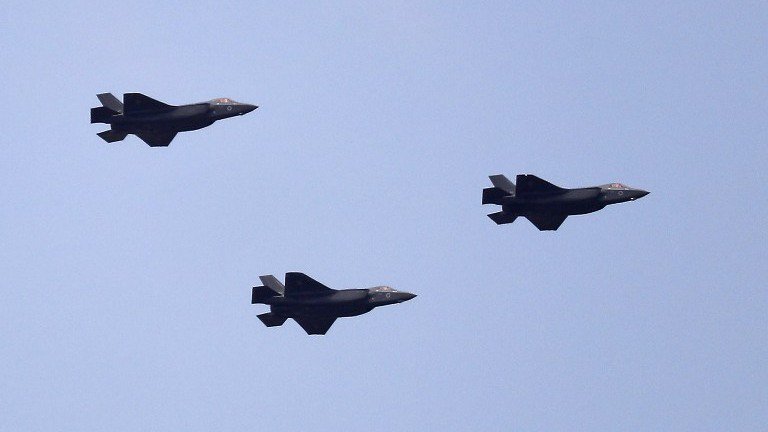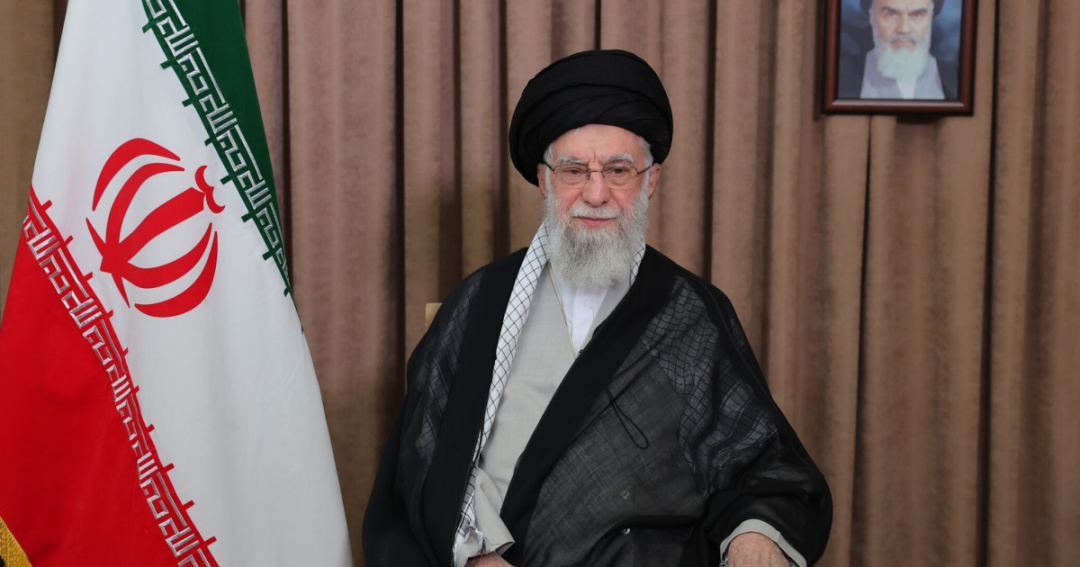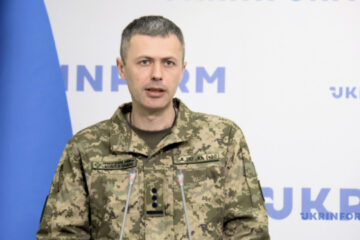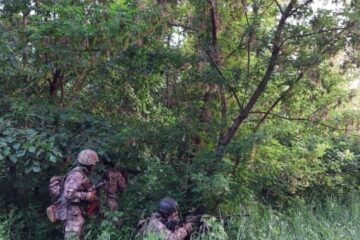Lessons from the Middle East confrontation for Ukraine and all of the world: drones, aviation and intelligence are key to victory. And the main lesson is that the “axis of evil” can and must be defeated
The first week of hostilities between Israel and Iran has torn away the veil of uncertainty, demonstrating a model of a new-generation military campaign. The Operation Am KE’Lavi (“Rising Lion”) is not just an act of retaliation, but a cold-blooded and methodical dismantling of the military machine that the ayatollah’s regime had been building for decades. It was not a chaotic exchange of blows, but a multipronged, meticulously planned campaign, the anatomy of which reveals the fundamental principles of modern warfare.
The Israel Defense Forces (IDF) launched a series of devastating strikes on key elements of Iran’s military and nuclear infrastructure. According to official figures, uranium enrichment facilities in Natanz and Isfahan were severely damaged, Iran’s lead nuclear scientists were eliminated, and a significant part of the command staff of the Islamic Revolutionary Guard Corps (IRGC) was taken out, and two chiefs of the General Staff were eliminated one after the other just in a matter of three days – there were no such precedents ever recorded in the history of warfare so far. Israeli forces managed to win air dominance over the western part of Iran, including Tehran, the capital city, within a matter of just a few days. This made it possible to switch from the use of expensive long-range missiles to a “carousel” tactic of direct air bombing.
Let’s try and analyze the key components of the Israeli-Iranian confrontation in more detail.
DRONES AND AVIATION: A SYMBIOSIS OF THE SLING AND THE SWORD
The experience of the Russo-Ukrainian war convinced the world that drones have revolutionized modern warfare. For Ukraine, they have become a kind of the slingshot of David, allowing painful hits to be dealt against Goliath. However, the Israeli operation has also shown that, in order to achieve strategic, not just tactical success, the slingshot must be used in tandem with a high-tech sword – modern combat aircraft.
Sergei Auslender, an Israeli journalist and defense analyst provides a description of the extent of the destruction, which indicates a systematic approach: “We can say that Israel conducted an operation that systematically targeted Iran’s key military infrastructure: more than half of the launchers, the air defense system, military aviation, top officers, as well as the heads of the nuclear program.” According to Mr. Auslender, the pre-emptive Israeli strike reportedly killed fifteen of Iran’s lead nuclear scientists, which signifies not just physical elimination but also an intellectual loss that will potentially send Iran’s nuclear program back for years.
The mechanism of this success, as Mr. Auslander explains, lies in the transformation of the Israel Air Force into a single reconnaissance and strike system. “Israel absolutely dominates the air. The F-35’s, outfitted with modern optoelectronic systems, detect and track missile launches at hundreds of kilometers away and respond immediately. The Iranian air defenses are practically all destroyed, the radars are not activated – any radiation source is immediately neutralized with anti-radar missiles.” This made it possible not just to strike, but to completely control the airspace, which, in turn, led to a sharp decrease in the intensity of Iranian missile strikes on Israel.
“Iranian missile launches are increasingly chaotic – it is clear that they are launched where “there is an opportunity”. Approximately half of Iran’s launchers have already been destroyed,” the expert added.

Israel Air Force F-35 fighter jets
At the same time, Oleksandr Kovalenko, defense analyst at the Information Resistance Group think tank warns against being excessively optimistic about the aviation component alone. He emphasizes that success is determined not by the presence of modern aircraft proper, but by a comprehensive approach. “The operation against Iran was lightning-fast and multipronged: it included the use of drones, intelligence networks, camouflaged ATGM launchers, as well as the involvement of adjacent territory, particularly in Iraq. This is a large-scale operation, focused not just on delivering strikes, but primarily on destroying the potential of Iran’s layered air defenses.” It was this pre-emptive “cleaning” of the airspace, carried out by intelligence and special operations forces, that ensured increased flexibility and freedom of maneuver for Israel’s air assets.
“This is the key point: Had Israel not “opened” Iranian airspace for itself, it would not have been able to achieve such an effect. Successful neutralization of Iran’s air defenses was a precondition for an effective strike – and it was achieved at a high technological level,” the analyst stressed.
THE FRAGILITY OF DEFENSES AND THE ILLUSION OF 100% PROTECTION
The developments of the week debunked another widespread myth – the myth of the possibility of creating air defenses that are entirely immune to enemy air attacks. The Israeli air defense system, consisting of several layers (Iron Dome, David’s Sling, Hetz), is ranked one of the best, if not the best in the world. It demonstrated phenomenal efficiency, intercepting the vast majority of Iranian missiles launched on Israel. However, this system failed to provide one hundred percent protection. Dozens of hits, destruction and, most tragically, human casualties, including five Ukrainian citizens, come as cruel reminder that any shield has its limitations.
Oleksandr Kovalenko explains this by the fundamental law of warfare – the “eternal technological race” between means of attack and means of defense. “No matter how modern air defenses are – today or in the future – means of destruction are constantly evolving, precisely in order to defeat air defenses.” He also draws attention to the uniqueness of Israeli conditions, which Ukraine doesn’t have. Firstly, this is geography. “The country’s territory has an area of 20 thousand square kilometers, which is approximately the size of the currently occupied Crimea. This area is much easier to shield with a layered air defense system at all levels.” Secondly, this is robust assistance from allies, whose aviation actively assisted to intercept Iranian drones approaching Israel. Relations between the USA, Britain, Jordan and Israel have been formed for decades. They have a historical, political and even ideological foundation. Ukraine too has support from partners, but the level of relations and the extent of commitments are different. It is incorrect to compare the current support for Ukraine with the Israeli model. We are moving along our own path, and doing so requires strategic endurance, not superficial comparisons,” the expert concludes.
THE FRAGILITY OF THE “AXIS OF EVIL”
The Axis of Evil, which includes Iran, Russia, and the DPRK, with the de facto support from China, has for years seemed monolithic and invulnerable. The Israeli operation dealt a powerful blow to this perception, demonstrating that with decisive and competent actions, the resistance of authoritarian regimes can be broken. As Mr. Kovalenko notes, “Regimes that seem monolithic often turn out to be houses of cards – it is enough just to identify the right point of influence.”
“The so-called “axis of evil” is not invincible. The example of Iran demonstrates that with the right approach, even an impenetrable, aggressive, and militarized regime such as Iran can suffer a strategic defeat. Israel conducted a comprehensive operation that effectively knocked its adversary out of the basic defense balance. The most telling result was zero air losses on the part of the IDF. This is not just symbolic – it is important technologically and strategically. Iran has long been perceived as an unyielding player: it seemed that it is impossible to break it or even deal a severe strike, that the Ayatollah’s regime was stable, and its air defenses were extremely effective. But Israel showed that even this system can “fall apart” if it acts decisively, accurately, and with the appropriate tools,” the analyst at the Information Resistance Group emphasizes.
In recent years, a climate of impunity prevailed in authoritarian regimes, this being particularly facilitated by the weakness of U.S. foreign policy.
“Fence-sitting, refusal of leadership and a shift in emphasis from pressure on the aggressors to pressure on the affected parties, such as Ukraine — this all only gave strength to self-confidence of dictatorships. And that is what makes the example of Israel important: it became a turning point where a small but determined and well-armed country, supported by partners, broke the stereotype about the “invincibility” of totalitarian regimes. This is a demonstration that, in geopolitics, everything can change instantaneously – if there is will, strategy and proven allies,” argues Oleksandr Kovalenko.

Iran’s supreme leader Ayatollah Ali Khamenei
However, defense expert Pavlo Lakiychuk offers a more restrained assessment, warning against premature conclusions about a strategic victory. He believes that we are currently observing a classic exchange of massive missile and air strikes, where each party uses its strengths, and the ultimate goal of this exchange is not fully understood. “Almost a week of fighting has not yet demonstrated anything strategically. Both parties — Israel and Iran — are conducting massive missile and air strikes… Both are hitting with what is available to them – the Israelis are using aviation, which is both quantitatively and qualitatively superior to the Iranian one. The Persians are using ballistic missiles, weapons that they have accumulated, realizing their technological lag… And here the question arises as to the purpose of the missile and air strikes. What goal are they to achieve? According to Mr. Lakiychuk, this “air warfare”, in the absence of plans for a ground operation, takes on the characteristics of psychological terror, where the goal is to force the enemy to abandon its intentions first. “Here they are not innovative. The aggressor state of Russia, exploiting its supremacy in aerial warfare, has been trying to force the Ukrainian people to surrender for the fourth year now. But instead, each blow makes us angrier, tempers our indomitability, consolidates the nation…” This view is an important reminder that an aerial campaign, even the most successful one, is not the whole war.
Against this background, Washington’s reaction is particularly telling. After Israel has already done the most difficult part of the work, President Trump shows up with ultimatums and hints of possible direct intervention. Experts view this as a desire to share someone else’s triumph. “Israel did a dirty job, and Trump will take credit for the victory won by someone else’s hands,” argues defense analyst Denys Popovych. This suggestion is shared by Kyrylo Sazonov, a blogger, political scientist, and serviceman at the 41st Separate Mechanized Brigade within the Armed Forces of Ukraine. He draws a bitter parallel for Ukraine: “From my perspective, once Russia’s air defenses are finally destroyed, the Russian army is defeated, and the Armed Forces of Ukraine stand near Moscow, there will be a lot of allies and helpers… And not like it is now…” This situation is a bitter reminder that in geopolitics, the one who arrived at the battlefield last often shouts the loudest about victory.
PROJECTION ON UKRAINE: IMPORTANT LESSONS ABOUT THE WAR AGAINST RUSSIA
The most valuable lesson is the fundamental importance of gaining air dominance by systematically taking out enemy air defenses. The Wall Street Journal journalist Yaroslav Trofimov aptly notes that Israel achieved in 48 hours what Russia could not achieve in Ukraine in 3.5 years. This failure, he argues, is the reason why the war in Ukraine has turned into a grueling battle. Retired British Air Marshal Edward Stinger explains Israel’s success by comprehensive training and integration of aviation into the cyber and intelligence network. This contrasts with the Russian approach, where pilots are simply operators of “flying artillery”. For Ukraine, this means that future offensive operations are impossible without first “cleaning” the sky.
The second lesson is the need for specialized air assets to break through layered defenses. Oleksandr Kovalenko has for years underscored the importance for Ukraine to have heavy fighters such as the F-15, which were created specifically for such tasks. “Even before 2022, I emphasized: if we are serious in our intention to liberate from Russian occupation the Donetsk and Luhansk regions, where Russia deployed a powerful air defense grid, then without heavy fighters, particularly the F-15s, we simply will not be able to provide effective support for our ground operations. The F-16 is not the class of aircraft that is designed to break through such defenses.” Israeli experience in using advanced platforms – the F-35s and upgraded and updated F-15s – confirms this thesis: the right tool for a specific task is the key to success.
The third lesson is the integration of technological superiority with an element of surprise and comprehensive, deep-reaching intelligence. As the WSJ notes, Iran was taken off guard, unlike Ukraine, who, thanks to intelligence, was able to disperse its aviation and air defense capabilities before the Russian invasion. Israeli special forces, operating on Iranian territory, destroyed key air defense infrastructure before the massive air campaign started.
THE PHILOSOPHY OF VICTORY: HOW ASYMMETRY AND INTELLIGENCE PREVAIL OVER NUMERICAL SUPERIORITY
A common philosophy of victory over a more powerful enemy is traced in the military approaches used by Israel and Ukraine, for all the differences in conditions.
This similarity is manifested primarily in the focus placed on asymmetric technologies and intelligence work with the local population. As Denys Popovych points out, “Israel has created a drone base on the territory of Iran” for strikes on missile emplacements. Oleksandr Kovalenko, for his part, confirms that this approach is a key element that is common for the tactics used by Israel and Ukraine. “This includes the creation of networks for launching FPV drones right from the enemy’s territory, operations involving local agents, the use of hideouts, and the coordination of ground operations with air strike operations.” He is confident that Russia as well maintains a similar potential for subversive operations within the Ukrainian Defense Forces, and its use can give a synergistic effect. Pavlo Lakiychuk shares the view that for Ukraine, “an analysis of the brilliant military-agent operations by the Mossad will be especially helpful if they are creatively interpreted and integrated with the considerable experience that our special services have gained.”

The SBU’s Spider Web drone operation has neutralized 41 aircraft of Russia’s strategic air fleet
The second common feature is a strategy of long-range strikes on the enemy’s centers of gravity. Ukraine is already actively implementing this approach, attacking Russian refineries, military plants, and airfields. Israel is acting in a similar vein, purposefully taking out not only launcher systems but also Iran’s production facilities and scientific capabilities. The goal here is not just to cause damage, but to undermine the enemy’s very ability to wage a protracted war.
Finally, both countries have demonstrated the ability to exploit the internal weakness and unpopularity of enemy regimes. As Michael Horowitz, a geopolitical and conflict analyst has noted, in Iran, “it is not difficult to find people who will agree to cooperate with Israel.” This is a fundamental vulnerability of any dictatorship, which Ukraine can and should also exploit in its war against Russia. Successful intelligence and sabotage operations in enemy territory are not only a military tactic, but also a powerful tool for demoralizing and destabilizing the regime from within. “I am certain that similar resources exist within Russia as well – at least among those who do not accept Putin’s regime and disagree with the course of the war. The reasonable engagement of such people into subversive activities, with certain security guarantees and coordination, can give a synergy effect. And in the future, this potential will undoubtedly be used,” Oleksandr Kovalenko summed it up.
Myroslav Liskovych, Kyiv




